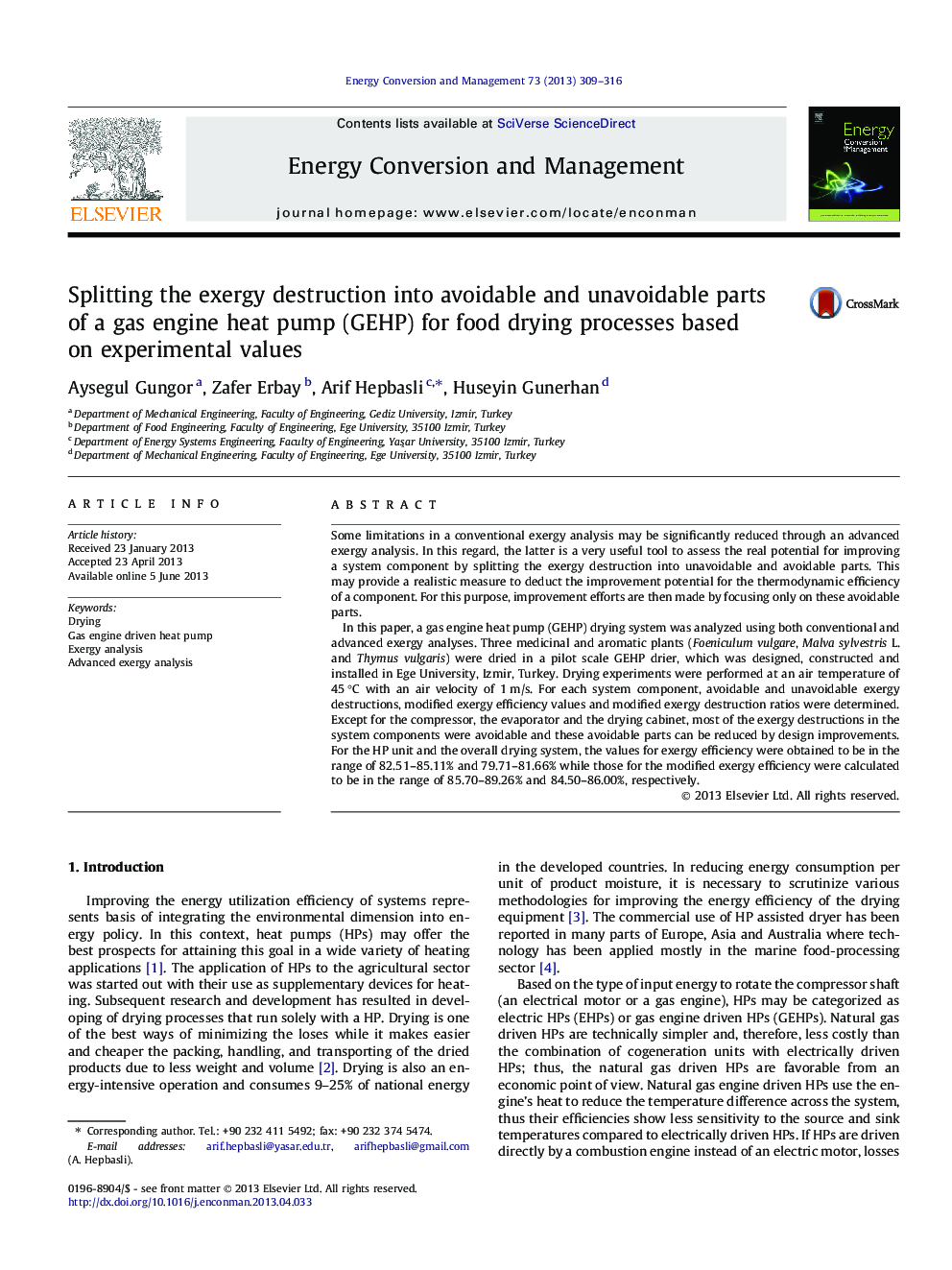| Article ID | Journal | Published Year | Pages | File Type |
|---|---|---|---|---|
| 764264 | Energy Conversion and Management | 2013 | 8 Pages |
•Advanced exergy analysis of a gas engine heat pump drying system for the first time.•Varying exergy efficiency values from 79.71% to 81.66% for the overall drying system.•Obtaining modified exergy efficiencies of 84.50–86.00% for the overall drying system.
Some limitations in a conventional exergy analysis may be significantly reduced through an advanced exergy analysis. In this regard, the latter is a very useful tool to assess the real potential for improving a system component by splitting the exergy destruction into unavoidable and avoidable parts. This may provide a realistic measure to deduct the improvement potential for the thermodynamic efficiency of a component. For this purpose, improvement efforts are then made by focusing only on these avoidable parts.In this paper, a gas engine heat pump (GEHP) drying system was analyzed using both conventional and advanced exergy analyses. Three medicinal and aromatic plants (Foeniculum vulgare, Malva sylvestris L. and Thymus vulgaris) were dried in a pilot scale GEHP drier, which was designed, constructed and installed in Ege University, Izmir, Turkey. Drying experiments were performed at an air temperature of 45 °C with an air velocity of 1 m/s. For each system component, avoidable and unavoidable exergy destructions, modified exergy efficiency values and modified exergy destruction ratios were determined. Except for the compressor, the evaporator and the drying cabinet, most of the exergy destructions in the system components were avoidable and these avoidable parts can be reduced by design improvements. For the HP unit and the overall drying system, the values for exergy efficiency were obtained to be in the range of 82.51–85.11% and 79.71–81.66% while those for the modified exergy efficiency were calculated to be in the range of 85.70–89.26% and 84.50–86.00%, respectively.
